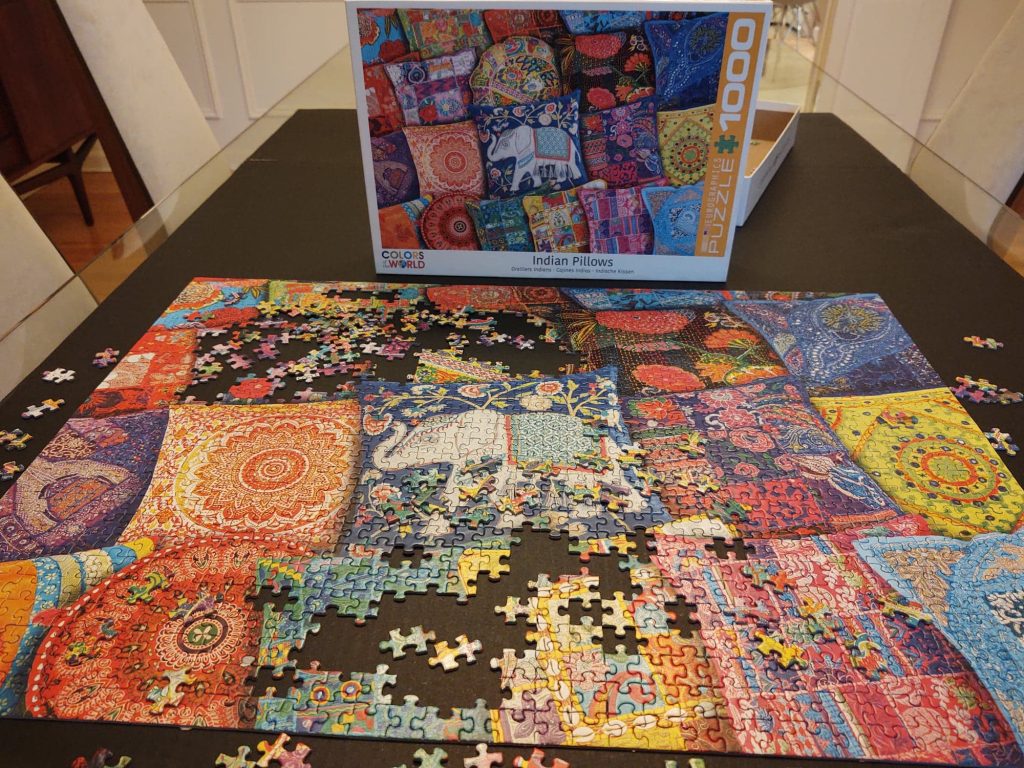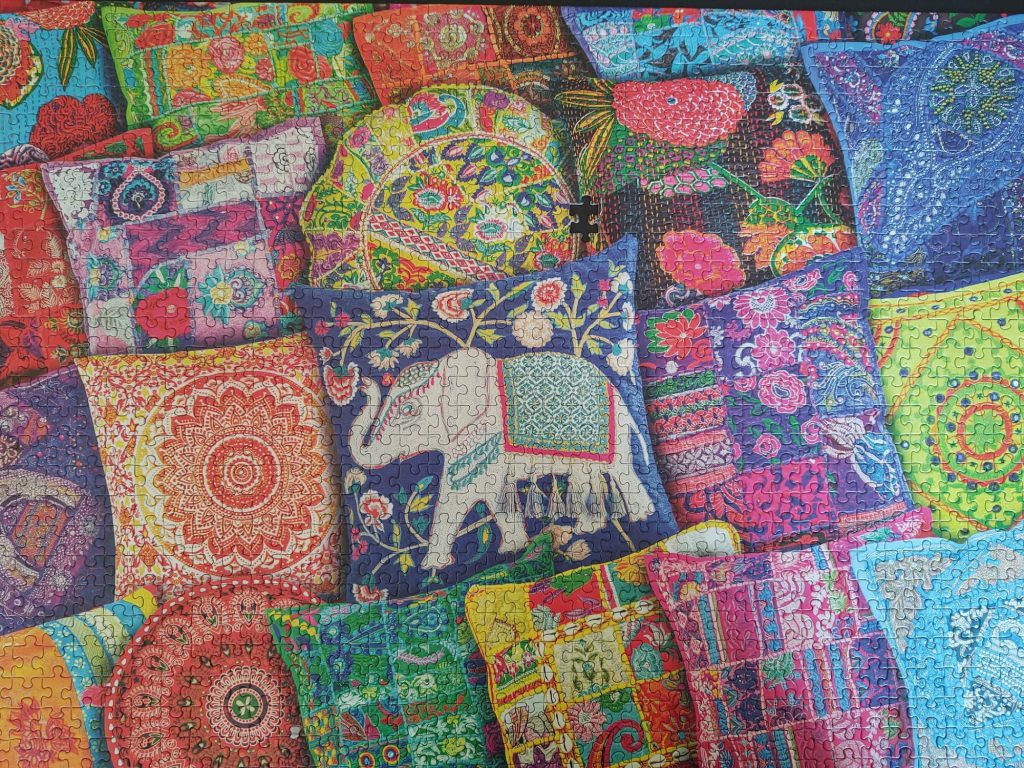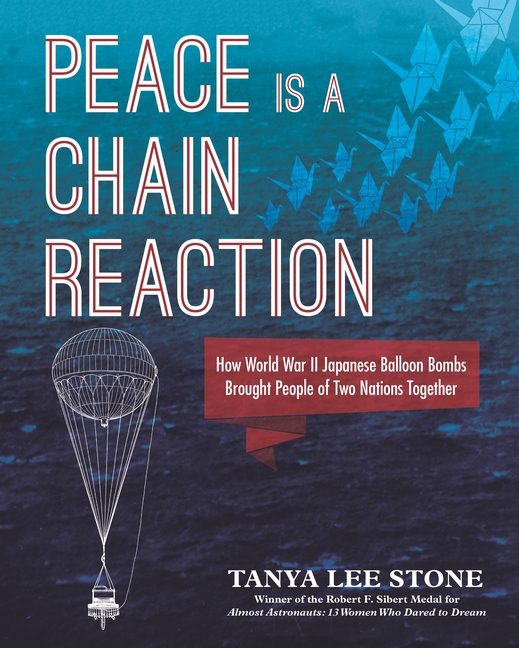
Putting the Puzzle Together
By Tanya Lee Stone
My friend Kayce Freed Jennings—co-founder of the Girl Rising Foundation—gave me a jigsaw puzzle to take home after spending a weekend with her in the Berkshires last year. I liked the look of it, with its mass of brilliantly colored and patterned fabrics. “Piles of Indian Pillows,” it was called. I’m not much of a puzzle person, but I was intrigued that she had been enjoying puzzles as a way to de-stress, and of course accepted her kind gift.
As I pored over the Indian Pillows, I began to soak up the tiny nuances of shade, texture, color, and shape that made up the different sections. The more I studied the pieces, turning them over in my hands, noticing where they all began to fit, the more intuitive the process became. As my familiarity with the many pieces increased, my sense of how to put together a whole and clear picture began to sharpen. Each time a piece told me just where it fit, I felt a rush of satisfaction. Sometimes, this flow was interrupted when one section or another ceased to make sense to me, until I remembered to look at the pieces from a new direction and could suddenly see where they were meant to go—often somewhere else entirely.

Turns out, I am indeed a puzzle person—and have been doing them for years, although the puzzles I have sought to solve have involved piecing together the tapestry of the true stories we call history. It is a slow and winding process I inevitably need to re-learn every time I write a book. Sure, there are elements of craft and skill from having done it before, but every story has to be figured out, and there are no shortcuts. The more I study the pieces of a person’s life (which come from as many primary and secondary sources as I can amass), the more I understand the meaning and importance of them, and how they are all interrelated. A quotation or event I may have previously disregarded as ancillary to a story will eventually reveal itself to me as, in fact, extremely integral. The clarity that comes from that recognition is absolutely akin to picking up a puzzle piece I have picked up countless times before and suddenly knowing exactly where it fits.
This occurred several times while writing Peace Is a Chain Reaction (Candlewick, 2022.) The foundational pillar of my research rested in the hundreds of pages of personal papers Yuzuru Takeshita and his family entrusted me with. I read his letters, personal thoughts, articles, and research papers over and over and over again until I had what I thought was a clear picture of the chronology of events and his interpretations of them. Yet there were instances in which something I had chosen to leave out, thinking it was tangential, kept tugging at me. It took me months—well, actually, years, when all is said and done—to understand the significance, for example, of how deeply Takeshita had integrated a childhood interaction he had with a Japanese soldier named Morito Okazaki after the fall of Nanjing. In my initial drafts, I wasn’t even planning on including it. It wasn’t until I started thinking about that interaction through a psychology lens that I began to understand it. Once I could see Takeshita more holistically—not just putting together the chronology of his experiences and telling them, but really trying to think about how our early experiences impact our later actions in life—it was clear to me that his interaction with Okazaki when he was just a kid was a motivating factor in Takeshita’s worldview decades later. Okazaki then not only made it into the book, he became the focus of a pivotal chapter.
It’s always surprising how long it takes me to have these revelations, as I’m an experienced researcher and fairly facile at drawing conclusions based on evidence. But what is more nuanced and enigmatic than how one human being’s experiences build and influence and shape their life? It should take time. And time, at least for me, is a critical component to writing authentic narrative nonfiction. The process of telling other people’s stories is an extremely intimate and personal one. It’s exhilarating in moments when I sense I’m getting it as right as I can, as if I have managed to walk in their shoes with enough clarity to do their story justice. Also surprising is that when I have completed the puzzle well enough to feel good about letting others read it, it can be bittersweet. I often experience some sadness when stepping back out of those shoes.

After working—on and off—on the Indian Pillows puzzle for months, I happened to finish it while writing this, and in putting the last puzzle piece down recognized a slightly parallel feeling to finishing a book. It was time to step away from the immersive experience and let my end result be. Even the one piece I discovered to be missing once the picture was complete felt right somehow. In telling true stories, my goal is to be as thorough as possible, and to see the world through my subject’s eyes as best I can, but my view—and anyone else’s view of anyone’s story—will always have missing pieces. With each narrative nonfiction story I write, though, it is a gift and an honor to even be able to try. My hope is that I have done the many interwoven narratives justice in Peace Is a Chain Reaction and that readers will come away with a captivating picture.
Text and images are courtesy of Tanya Lee Stone and may not be used without express written consent.


Leave a Reply